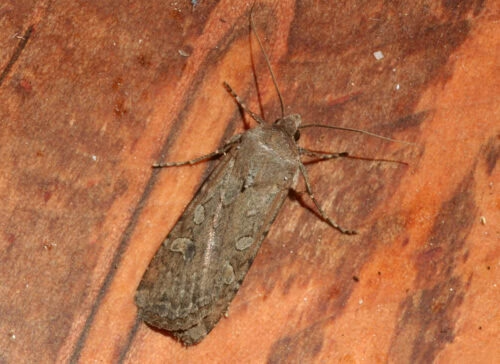The Life Cycle of Army Cutworms. Army cutworms torment farmers, especially those living in areas between North America and Canada.
These pests wreak havoc as they transfer from farm to farm.
Eating crops and not stopping until there is nothing left.
The eating spree of armyworms usually happens at night.
They ransack farm fields in large groups.
As a result, not many are privy to the damage that they’re about to do.
It’s a common scenario for those who don’t have a clue to be shocked.
By the ghastly appearance of their crops due to the arrival of army cutworms the night before.
Army cutworms bring terror to those who are into agriculture.
Familiarizing yourself with the army cutworm life cycle might help prevent the worst.
This article provides you with a simple yet detailed idea about the growth of these pests so read on.
The Source of Them All – The Armyworm Moths
Army cutworms come from army cutworm moths that most refer to as millers.
Millers are 1 1/2 inches when their wingspan is extended.
Their defining feature is a gray or brown overall body correction.
A hairy thorax and abdomen, and two white spots near the tips of their forewing.
During June or July, the army cutworm moths lay their eggs on the ground.
Where plants healthily grow, they prefer moist and shady areas.
This is because sunlight and dryness can significantly damage the eggs.
The leaves folded leaves of plants are another ideal location for laying eggs.
The moths lay their eggs in masses or rows.
Each egg looks like small white beads which eventually turn brown as hatching comes near.
Commonly, the average hatching period is 10 days.
The Birth Of The Army Cutworms.
After 10 days, greenish or pale brown worms come out of eggs.
Each will start to eat the plant nearest to their hatching location.
All the larvae will keep on eating until all plants are consumed.
If the food source isn’t enough, the army cutworms flock together and find other areas to infest.
They usually move silently in hordes.
The army cutworm horde will eat all the plants on its path.
Feeding happens for one month wherein each army cutworm enters six larvae stages.
The army cutworms change body size, texture, and color in each larvae stage.
Pupal Stage – The Army Cutworms Stop Their March.
Upon having its fill, the army cutworm horde stops the march.
Each of the members then burrows into the ground and generates small cells.
Sometimes, the army cutworms also make their cells on litter, clods.
And other objects that provide the same condition as burrowing into the soil.
Army cutworm pupa will initially have a white or light brown color.
These gradually turn into a darker shade of brown or black.
The pupal stage is the longest period of the army cutworm life cycle.
They may remain dormant within their shells, developing wings, thorax, abdomen, and antenna, for 2 months.
Adult Stage – The Millers Soar With The Wind.
After dormancy, the army cutworm pupa breaks out of their shell with a fully developed antenna. Thorax, abdomen, and wings. As adults, it’s easier to call army cutworms millers.
The Life Cycle of Army Cutworms.
The millers are much plant-friendly compared to their larvae forms.
Instead of ravishing leaves, roots, and stems.
The millers are happy with a diet comprising of plant nectar.
During the mating season, each miller then finds a suitable location for laying eggs.
And everything repeats back to square one.
How To Prevent Millers From Laying Eggs On Your Garden?
Army cutworms aren’t picky about which plants to eat.
But their parents, the millers, are very picky about where to lay eggs.
Therefore, you can’t prevent the army cutworm infestation by doing the following:
Keep your garden free from shade.
Millers love to lay their eggs on plants or soil that aren’t exposed to sunlight.
Cut possible eliminate sources of shade such as tall grasses, trees.
Large garden equipment, etc. from your garden.
You should till the soil permanently during the season.
Where the millers are likely to have produced eggs.
Army cutworm eggs that are on the soil aren’t deep.
Tilling works because it overturns the soil and exposes the eggs to sunlight.
Which prevents them from hatching.
You can also use bucket traps from catching millers.
Bucket traps deter millers from hatching eggs.
Furthermore, they help to determine the density of millers that arrived in the neighborhood.

